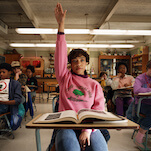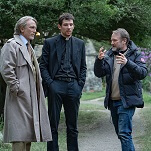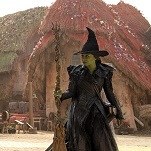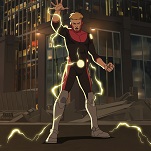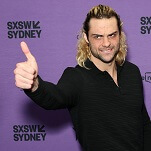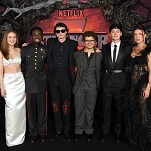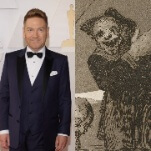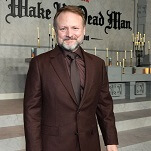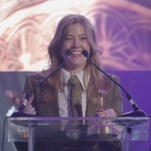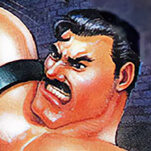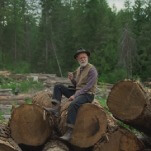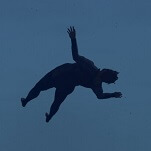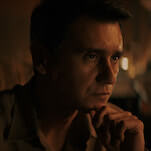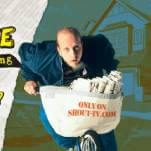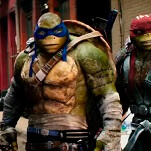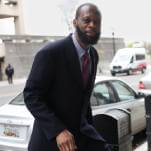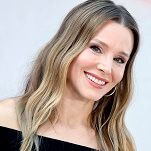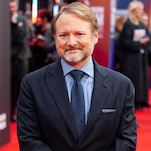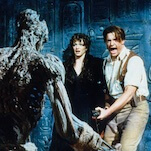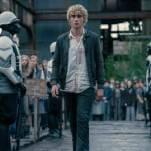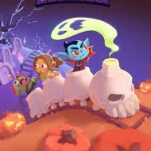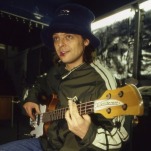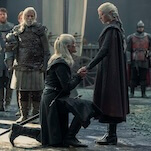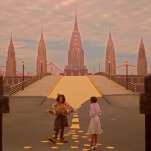Yet it’s more than just an apparent love for the text that pegs Zeitlin as a natural fit for it. Though arriving eight years after his celebrated breakthrough, the long-gestating Wendy shows almost no signs of creative maturation. From its swelling score to its cast of nonprofessional actors to the child’s-eye vantage of its story and camerawork, the film is basically Beasts Redux, just vaguely molded into the shape of Barrie’s classic. It suggests that Zeitlin, throwing more handfuls of fairy dust over an impoverished American South, is something of a lost boy himself. Like Pan and his posse, he stubbornly refuses to grow.
The whole enduring appeal of this children’s-lit touchstone—an ode to indefinitely prolonged adolescence—is reflected in the sheer number of times it’s been revived. Wendy is far from the first revisionist adaptation, or the first to adopt a fresh perspective; alongside countless faithful retellings are Alan Moore’s Lost Girls, which takes Wendy’s sexual awakening as its very adult-oriented focus, and The Terrible Tragedy Of Peter Pan, a Chicago stage version heavy on subtext-deflating psychoanalysis. (One hilariously harsh touch: No matter how hard the audience clapped, Tinker Bell stayed dead.) Though he jettisons some elements, Zeitlin’s innovation is more environmental than conceptual. He’s transported the story to grungy small-town Louisiana, where a 10-year-old Wendy (Devin France) lives with her twin brothers, Douglas (Gage Naquin) and James (Gavin Naquin), above the greasy spoon her mother runs.
It’s by rail, not air, that Peter (Yashua Mack) enters the lives of the Darling children, beckoning them to a mysterious train that crosses the tracks running alongside their cramped second-floor apartment. Once they’ve climbed aboard, it’s off to a volcanic woodland island populated by children who never age. There’s no Tink, no giant alligator, and precious little flying in this Neverland, but there is a glowing underwater sea creature the kids call “The Mother”—a benevolent aquatic creature presumably powering the place’s proverbial fountain of youth. Watching Wendy, you get a clear sense of why it took Zeitlin so long to finish the movie. Shot on 16mm by natural light in the West Indies with a bunch of kids with no acting experience, the film doubles down on the flagrantly independent means and spirit of its predecessor; it’s earthier and much less polished than the average Peter Pan. At times, it approaches the genuine rowdiness of unsupervised childhood; there’s a touch of Lord Of The Flies chaos to the wilderness jamboree Zeitlin orchestrates.
Wendy, in other words, has offbeat energy to spare: that mix of the feral and the mythic that powered Beasts. But it doesn’t take long to realize that this recycled vibe, this earnest fairy-tale grandeur, is all that’s propping the movie up. It’s as if Zeitlin threw every ounce of his energy into crafting another romantically rustic fantasy world and never thought up anything to actually happen there. In so much as there’s a narrative to speak of, it’s a kind of origin story, more half-baked than the one that drove the recent Pan. The plot, meandering and unstructured, comes to involve the conflict between Peter’s tribe of “rescued” runaways and the island’s morosely bearded adult inhabitants, former lost boys robbed of their immortality by the traumas that hasten adulthood’s advance. Would it surprise you to learn that one of these resentful grownups loses a hand? Or that he replaces it with a certain iconic sharp object? Wendy’s loose approximation of Barrie might be more engaging if its preteen heroes had distinctive personalities to speak of. But only Wendy, in her sparks of curiosity and defiance, ever comes close to seeming like a real character; the rest, even Peter, blend together into a jabbering, indistinct mass.
Beasts, for all the praise heaped upon it, suffered from its own miscalculations. In conceiving his backwater shantytown The Bathtub as a metaphoric stand in for the Ninth Ward, Zeitlin offered a tribute to New Orleans that risked presenting its residents as noble savages. Far from enhancing the power of his fairy tale, these real-world parallels compromised it. Wendy has no such topical angle. If its version of Neverland represents anything, it’s just the usual clichés about fighting off the loss of innocence and wonder—the same stuff every version of Peter Pan implicitly or explicitly touches upon. You’re left wondering who, exactly, this curiously glum fantasia will speak to. Almost certainly not children: By the time he’s offering a “down-to-earth” play on the climactic pirate battle, Zeitlin has pretentiously zapped the story of all its mischief and fun, its magic. Superficially, he seemed like a perfect fit for Pan. But like Steven Speilberg, another filmmaker deeply, relevantly in touch with his inner 10-year-old, he fails to make this oft-adapted tale soar anew.


